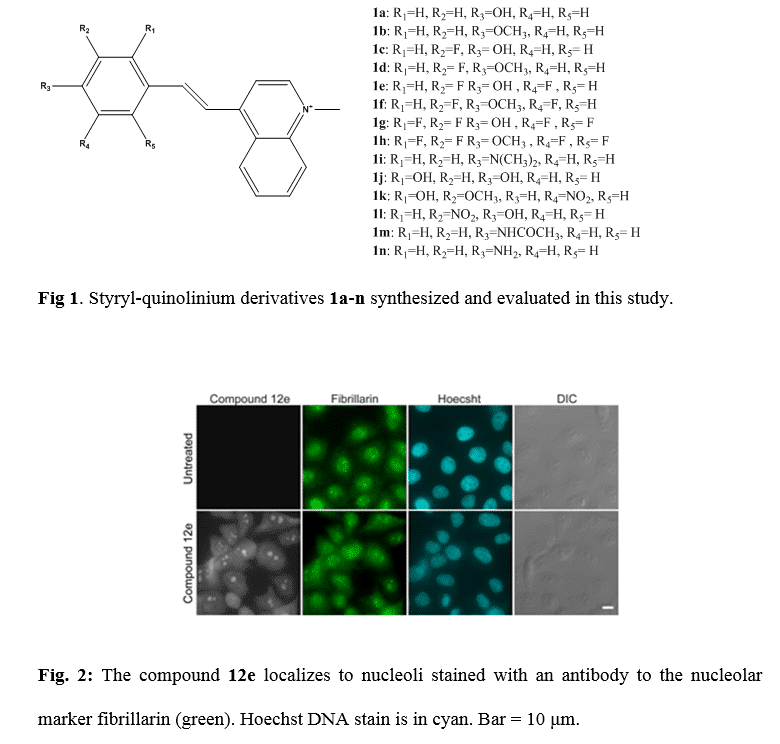
Applying Styryl Quinolinium fluorescent probes for imaging of ribosomal RNA in living cells
2Faculty of Life Sciences & Institute of Nanotechnology, Bar-Ilan University, Ramat-Gan, Israel
The detection of subcellular domains in cells can be obtained by specific fluorescent markers. Here we report the use of styryl quinolinium dyes that selectively stain ribosomal RNA (rRNA) in nucleoli and in the cytoplasm. The dyes are cell permeable and can be applied to fixed and living cells and are non-toxic. Styryl quinolinium dyes constitute a widely used group of dyes. With a view to develop new NIR emitting dyes for subcellular staining, we synthesized a group of 1-methyl-4-(substituted) styryl-quinolinium derivatives, (1a –n). For this purpose we developed highly efficient microwave-assisted synthesis. This synthetic method prevents the formation of any side products, and requires only recrystallization to obtain the products in yields generally greater than 90%. Compounds 1c-f and 1i in various solvents exhibited maximum absorbance at 500 - 660 nm, and a molar extinction coefficient of 25400 – 49000 M-1cm-1. Moreover, these compounds emitted at 630 - 715 nm. The quantum yield values in solution were between 0.0011- 0.0177; however, in the high viscous solvent, glycerol, these values increased to 0.0031- 0.0555. Furthermore, the photostability of all the dyes 1a– n was measured, the data indicated that all the dyes are highly photochemical stable. The cytotoxicity of the most promising dyes was evaluated on T cells, showing that certain dyes were not toxic. Particularly, compound 1e exhibited unqiue photophysical proprieties in cells. The fluorescence of 1e specifically stained nucleoli and the cytoplasm. Various tests showed the markedly higher affinity of the dye for RNA, specifically rRNA. We demonstrate that probe 1e is an attractive staining reagent for visualizing and assessing rRNA in fixed and living cells.

Powered by Eventact EMS